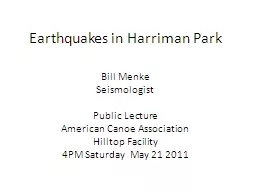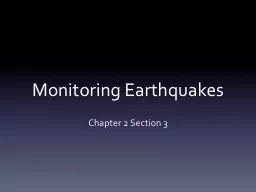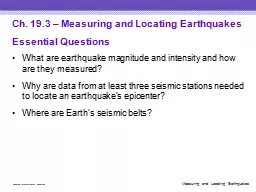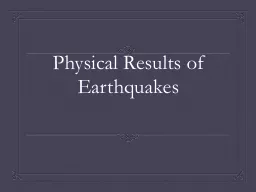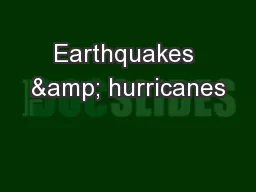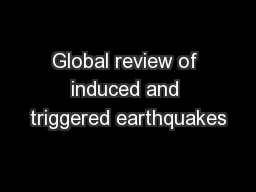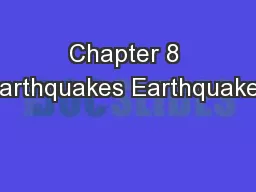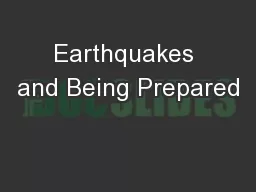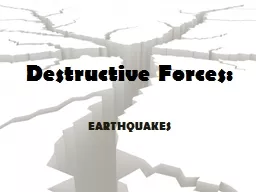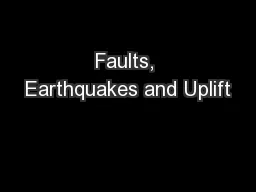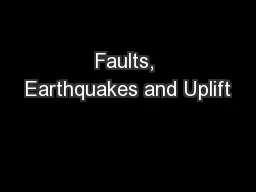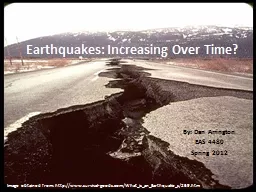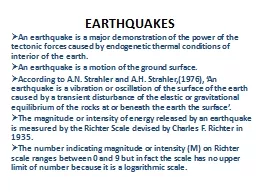PPT-Earthquakes in Harriman Park
Author : lindy-dunigan | Published Date : 2018-02-22
Bill Menke Seismologist Public Lecture American Canoe Association Hilltop Facility 4PM Saturday May 21 2011 Another Small Earthquake Rattles Central NJ WCBSTV
Presentation Embed Code
Download Presentation
Download Presentation The PPT/PDF document "Earthquakes in Harriman Park" is the property of its rightful owner. Permission is granted to download and print the materials on this website for personal, non-commercial use only, and to display it on your personal computer provided you do not modify the materials and that you retain all copyright notices contained in the materials. By downloading content from our website, you accept the terms of this agreement.
Earthquakes in Harriman Park: Transcript
Download Rules Of Document
"Earthquakes in Harriman Park"The content belongs to its owner. You may download and print it for personal use, without modification, and keep all copyright notices. By downloading, you agree to these terms.
Related Documents

